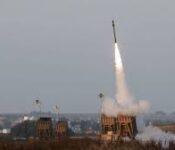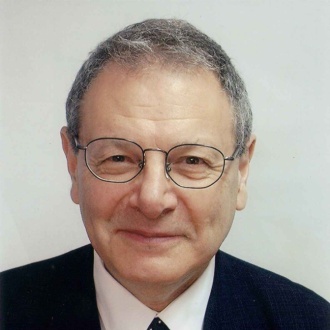Shoftim: Rabbinic Legislation
Where Does it Say?
The following question is one that rabbis commonly field. The written Torah is G-d’s law, but on what authority do Rabbis legislate new laws?
Its a fair question and it was first posed by the Talmud. Before kindling the Chanukah lights we chant a blessing, thanking G-d for his commandment to kindle these lights. The Chanukah candles are a rabbinic enactment, why, asks the Talmud, is this tradition classified a divine commandment ? (1)
In response the Talmud points to the following text.
If a point of law eludes your local court . . . resulting in conflicting rulings. . . You should journey to the place that G-d your Lord will choose and come before the Priests, Levites and judges of that time . . . you must obey their instructions. You should act in accordance with their teachings and judgments. You shall not deviate from them. (2)
This text, says the Talmud, invests the rabbis, or in biblical lexicon, the judges, with the authority to enact new laws. The Chanukah lights are a rabbinic enactment, but the rabbinic authority to enact it and our obligation to observe it, stems from this Biblical verse. Before kindling the Chanukah lights, we thank G-d for commanding us to obey the rabbinic enactments and for our resultant obligation to kindle the Chanukah lights. (3)
In Which Time?
Does this text apply to contemporary rabbis or only to biblical “Judges?”
Contemporary rabbis are authorized to rule on questions of ritual, civil and criminal law. However, only Jewish courts in the era of the Sanhedrin, the high Jewish court that convened on the temple mount, were authorized to adjudicate over trials that carried the death penalty.
When the Sanhedrin vacated the temple mount, ordinary Jewish courts were divested of authority to try such cases.
This is reflected in a seeming contradiction in the above cited text. On the one hand it indicates that judges invested with such authority presided in the the temple, the “place that G-d chose.” This implies that contemporary rabbis are not invested with such authority. (4) On the other hand, the text enjoins us to approach the judges of, “our time,” namely any rabbi at any time and in any location. (5)
In light of the Talmudic teaching, both verses are valid. Questions on capital offenses were only brought before judges, who sat in the “place of G-d’s choosing.” All other questions are still addressed by Jewish courts of, “our time.” (6)
Contemporary Jewish Law
Do contemporary rabbis legislate new laws to meet contemporary needs?
The Sanhedrin held jurisdiction over the entire Jewish community. Since the disbandment of the Sanhedrin very few rabbis have been able to claim global Jewish recognition, let alone, jurisdiction.
Individual rabbis hold jurisdiction over their respective communities. Exceptionally renowned rabbis command greater respect and their rulings are often folowed in wider circles, but very few rabbis today command global jurisdiction.
The Talmud was one such example. It was written well after the Sanhedrin was disbanded, yet the rulings of the Talmud were considered binding upon the entire Jewish community. (7)
Another such example was the Shulchan Aruch, the Code of Jewish Law. Jointly authored, in the Sixteenth Century, by Rabbi Joseph Karo and Rabbi Moshe Isserlish, rulings cited in the Code of Jewish Law were accepted by Jewish communities across the globe.
These two books were the exception rather than the norm. In most cases, new rabbinic ordinances are only binding in the communities where they were issued. Contemporary Jewish communities have thus come to reflect a mosaic of customs and traditions. (8)
Repealing Ancient Laws
If rabbis today maintain similar authority to rabbis of old, why don’t contemporary rabbis repeal ancient laws that seem outdated to contemporary needs?
The Talmud lays out the exact criteria on how judges may overturn rulings of their predecessors. While the precise details of these laws are beyond the scope of this essay, one criteria that emerges with great clarity is that only a formal Sanhedrin may repeal rulings of a former Sanhedrin. (9)
New laws may be enacted by rabbis in all generations though they are only binding on communities under their jurisdiction. Old laws cannot be repealed so long as the Sanhedrin is not reconstituted.
Sanhedrin
Semicha, Halachic ordination, is a chain that reaches back across the generations to Moses at Sinai. Moses ordained his student, Joshua, who in turn ordained his pupils and they ordained the next generation. With time it became more and more difficult to find viable candidates for Semicha. In the year 358 the scarcity of viable candidates for Semicha forced the Sanhedrin to disband. One this chain of Semicha was broken, even by a single generation, it could not be reestablished. (10)
It is an accepted tradition that the Sanhedrin will be restored by the Moshiach, who will be of equal stature to Moses in respect to the convening of a Sanhedrin. This Sanhedrin will be empowered to initiate a full review of the entire spectrum of existing rabbinic law. (11)
They will repeal laws they see fit to repeal and establish new laws that they see fit to establish. The establishment of such a rabbinical body will surely be welcomed and embraced by all of Israel. May that time come very soon.
Footnotes
- Bab. Talmud, Shabbat, 23a. An alternate opinion holds that the authority flows from the verse, “Ask your father and he will inform you, your elders and they will teach you.” (Deuteronomy 32: 7.)
- Deuteronomy 17: 11.
- The exact nature of this authority is a subject of dispute between two great Halachic decisors of the twelfth century, Maimonides and Nachmanidies. This dispute as well as the rabbinical scholarship that surrounds it can be found in Sefer Hamitzvos, Root #1.
- The place that G-d chose actually refers to Jerusalem, not necessarily during the time that the temple stood. Yet, a different verse implies that it relates only to the Temple era. The verse states that the judges are generally accompanied by Priests and Levites. The only time that Jerusalem was populated by Priests and Levites was in the era when the temple stood. Levites and Priests were routinely drafted into the Sanhedrin because they were very well versed in Torah law. They were supported by the Priestly Offerings extended to them by Israelites and they did not need to work their own fields to earn a livelihood. This left them plenty of time to study the Torah. (Sifri assures us that while this verse includes priests and levites in the Sanhedrin this was by no means required.) For more detail see Torah Temimah on Deuteronomy 17: 9.
- Bab. Talmud, Rosh Hashanah, 25b and Sanhedrin, 52b.
- As explained by Torah Temimah Deuteronomy 17: 10.See also Bab. Talmud, Brachot, 58 a. Makot 7a and Sifri on Exodus 21: 14 and on Deuteronomy 17: 8. The Talmud reports (Avodah Zarah 5b) that forty years before the Temple was destroyed the Sanhedrin removed itself from the Temple Mount because there were too many cases of Capital Offense. Unable to handle the demanding docket, (the precise reasons are debated by the commentaries) they simply removed themselves from the Temple Mount and thus relinquished their power and that of all other Jewish courts the authority to try capital offenses.
- Introduction to Yad Hachazakah (Maimonides, R. Moshe ben Maimon, Egypt, 1135-1204). Bab. Talmud, Sanhedrin, Ch. 1. Handbook of Jewish thought, Rabbi Aryeh Kaplan, Maznaim Publications, New York/ Jerusalem, 1979, vol. I, ch. 12. See also Likutei Sichos (R. Menachem M Schneerson, Rebbe of Lubavitch, NY, 1902-1994), IXXX, p. 104.
- This is how the distinction between the Sefard and Ashkenaz Jewish communities were formed. Rabbis in Germany, Ashkenaz in Hebrew, issued rulings that were binding on the Jewish community of Germany. Rabbis in Spain, Sefard in Hebrew, issued rulings that were binding on the Jewish community of Spain. Each community accepted its rabbi’s rulings and distinctions were thus formed.
- There is halachic precedence for this structure as each tribe in ancient Israel maintained regional courts, whose jurisdiction extended only to its tribe. See Bab. Talmud, Avodah zarah 36a, Yad Hachazakah Hil. Mamrim, ch. 1. See also Handbook of Jewish thought (R. Aryeh Kaplan, NY, 1932-1983) vol. I, ch. 11.
- Yad Hachazakah, Hil. Sanhedrin 4:1. See also Handbook of Jewish thought, vol. I, ch. 10.
- “And I will return your judges like they were at first.” (Isaiah 1: 26) See also Yad Hachazakah, Hil. Sanhedrin, 1: 3.
Tags: rabbinic, Torah

























